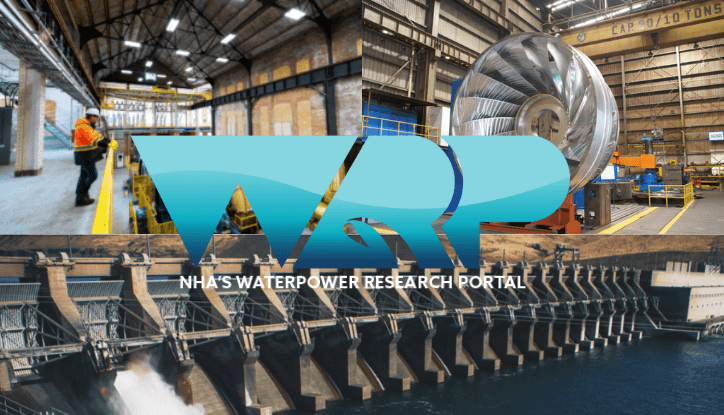
Featured Research
Evaluation of Modular and Scalable Downstream Passage Systems for Silver American Eels
Department of Energy, Alden Research Laboratory, Lakeside Engineering, Blueleaf
Lead Researcher: Steve Amaral
Research Topic: Conventional Hydro
Implementation of effective downstream passage for silver-phase American Eel (Anguilla rostrata) at hydropower dams using methods that are economically feasible has been a challenge for many project owners. Due to the potential for high mortality rates during turbine passage, resource agencies have focused on mandatory prescriptions that prevent entrainment by physically excluding eels (i.e., narrow trash rack bar spacing) or eliminating turbines as a passage route (i.e., unit shutdowns at night during migration). Both of these options can significantly impact the economic viability of a project. Consequently, there is a need for alternative technologies that can provide safe and effective downstream passage for silver eels without having a major impact on the ability of a project to generate power during the eel downstream migration period.
To address the need for biologically and cost-effective eel bypass systems, Alden Research Laboratory received an award from the U.S. Department of Energy to conduct a biological evaluation of two new bypass designs developed specifically for silver eels. Both systems can be classified as modular and scalable and require very little flow compared to conventional bypass designs. The primary goals of this research project were to provide information and data on the biological performance and design and operation of the two bypass systems and to assess their potential application at hydropower projects within the range of American Eel in the US. To achieve these goals, Alden conducted laboratory and field evaluations of each bypass system and assessed the feasibility of application of the two technologies at a wide range of hydro projects, including what the expected operational impacts and costs will be relative to the current standards for providing downstream eel passage. Numerical hydraulic modeling was also conducted for a subset of the laboratory flume test conditions and for the intake channel and turbine intakes at the field study site.
The laboratory results indicated that the two systems, operated alone or in combination, had potential to effectively bypass silver eels at turbine intakes under certain design and operational conditions. The ineffectiveness of the bypass systems at the field site was attributed primarily to high velocities at the turbine intake (up to about 4 ft/s based on CFD modeling) that made it difficult for eels to locate a bypass opening before becoming entrained or impinged. Additionally, for three of the four test releases about 40 to 60% of test fish were last detected in the impoundment, indicating they moved upstream out of the power canal and likely passed downstream over the spillway. The results of four case studies completed as part of the technology application assessment indicate that the two eel bypass systems evaluated for this study may not achieve acceptable levels of bypass efficiency and total downstream passage survival for silver eels, but the two systems would be less costly to implement mainly due to bypass flow requirements that can be one to two orders of magnitude less than conventional submerged and surface bypasses.


